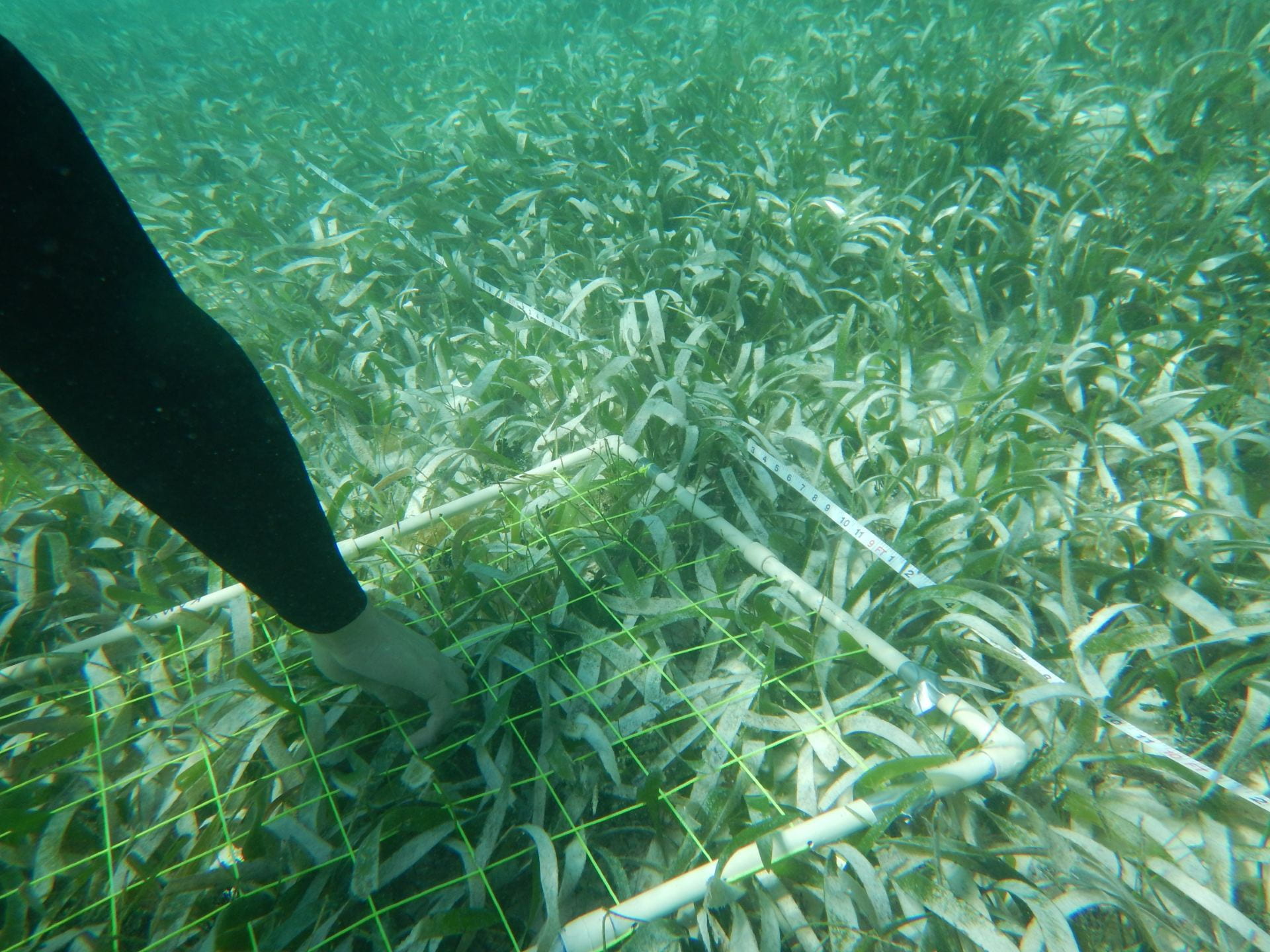This morning we met after breakfast at 7:45 to use a quadrat measurement method in a coral graveyard (a rocky shore composed mostly of coral fragments). We measured coral density at the crossections of the strings in our quadrats, then computed a density of around 30% (A rough measure of exclusively recognizable corals, as most fragments were originally corals). We then brought some dead corals back to the wet lab (area beneath a building on stilts) to identify. We were able to identify Siderastrea (possibly radians), Mountainous star coral (Orbicella faveolata), Symmetrical brain coral (Pseudodiploria strigosa), Golfball coral (Favia fragum), Pillar coral (Dendrogyra cylindrus), Lettuce coral (Agaricia sp.), and possibly Mustard hill coral (Porites atreoides), and Staghorn coral (Acropora cervicornis).
A note about identification of the corals above: Orbicella spp. have grooves between polyps, while Siderastrea spp. has a smooth surface.
We went after lunch to try quadrat measurement in the water. It’s difficult because you are trying to maneuver this square made of a square of pipes with a women net of string while the current moves you, the quadrat, and the seagrass we were trying to count to quantify the difference in seagrass coverage between a seagrass patch and one of mixed seagrass and algae. When we try a similar procedure on the coral, it may be easier because at least the coral won’t wave back and forth.

After that practice, we swam out to the patch reef and saw corals! Some others saw a nurse shark, but I was unfortunately too busy struggling with my foggy mask. I did see the Spiny Lobster, though. You can recognize them because their antennae are long and poke out from under rocks.
Also sand flies. They are essentially little biting gnats. They invaded our dorm. And we (mostly Cassia and Anna) spent a good hour trying to kill them all by slapping them with a notebook while they were still around the ceiling light, knowing they would disperse and spend more time biting us when we turned the light off. Lesson learned: close the door quickly. The sand flies are everywhere.


